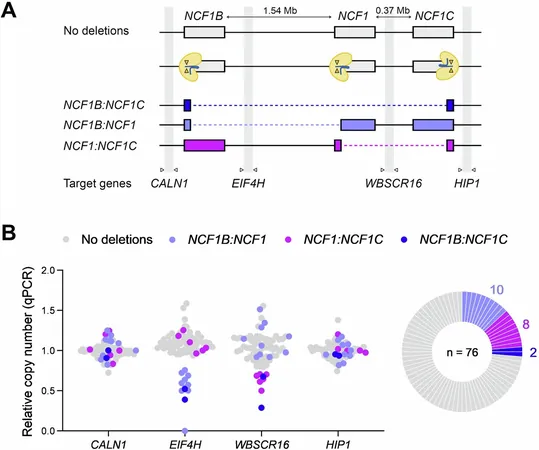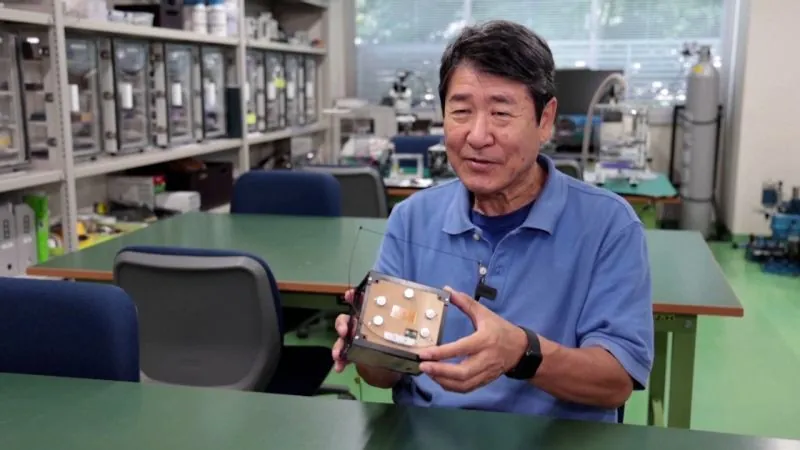
Revolutionary CRISPR Technology Reveals Hidden Dangers: New Genetic Defects Uncovered!
2024-11-06
Author: Ming
Introduction
Recent advancements in gene-editing technology have made headlines, particularly the CRISPR molecular scissors, hailed as a potential game-changer in treating genetic diseases. However, a groundbreaking study from researchers at the University of Zurich (UZH) has unveiled a troubling reality: while CRISPR can correct specific genetic mutations, it may also inadvertently introduce new defects.
The Study Focus
The research, published in *Communications Biology*, focuses on chronic granulomatous disease (CGD), a rare inherited condition that impacts approximately 1 in 120,000 individuals. This daunting disease weakens the immune system, leaving patients vulnerable to severe infections, which can often be life-threatening. The root of CGD lies in a deletion of two crucial DNA bases within the NCF1 gene, leading to a failure in producing an essential enzyme complex necessary for combating bacterial and fungal infections.
CRISPR Technology Applied
Using CRISPR technology, the UZH research team successfully inserted these missing bases into immune cell cultures derived from patients with CGD. "This is a promising result for the use of CRISPR technology to correct the mutation underlying this disease," stated Janine Reichenbach, the project lead and professor of somatic gene therapy at the University Children’s Hospital Zurich.
Unintended Consequences
However, the excitement was short-lived. Some of the gene-edited cells developed additional unforeseen defects, including missing segments from the chromosome where the editing occurred. This peculiar situation arises from the unique genetic structure of the NCF1 gene, which exists three times on the same chromosome—one active gene and two pseudogenes. The CRISPR system, unfortunately, can’t differentiate between these sequences, resulting in unintended cuts that may misalign or eliminate entire gene regions. Alarmingly, this could potentially lead to serious medical consequences such as leukemia.
Caution Advised
Reichenbach cautions, "This calls for caution when using CRISPR technology in a clinical setting," underscoring the complexity involved in gene-editing therapies.
Exploring Safer Strategies
In a bid to enhance the safety profile of CRISPR, the researchers explored various alternative strategies, including modified CRISPR components and protective measures to limit the chances of extensive chromosome cuts. Despite their efforts, none of the strategies completely eliminated the risk of unintended genetic alterations.
Conclusion and Future Outlook
Martin Jinek, co-author and professor at the UZH Department of Biochemistry, emphasizes the dual nature of CRISPR technology; it holds significant therapeutic promise but simultaneously harbors serious challenges. He remarked, "This study highlights both the promising and challenging aspects of CRISPR-based therapies." There is widespread agreement among experts that advancing technology is essential for developing safer and more effective gene-editing treatments for not just chronic granulomatous disease, but a multitude of inherited disorders.
Final Thoughts
As the scientific community continues to push the boundaries of genetic research, the revelations from this study stress the importance of meticulous oversight and innovative solutions to ensure these powerful tools can be harnessed safely for the benefit of humanity. Keep an eye on the future of CRISPR—it’s a groundbreaking field, but as proven, one that warrants close attention and further refinement.



 Brasil (PT)
Brasil (PT)
 Canada (EN)
Canada (EN)
 Chile (ES)
Chile (ES)
 España (ES)
España (ES)
 France (FR)
France (FR)
 Hong Kong (EN)
Hong Kong (EN)
 Italia (IT)
Italia (IT)
 日本 (JA)
日本 (JA)
 Magyarország (HU)
Magyarország (HU)
 Norge (NO)
Norge (NO)
 Polska (PL)
Polska (PL)
 Schweiz (DE)
Schweiz (DE)
 Singapore (EN)
Singapore (EN)
 Sverige (SV)
Sverige (SV)
 Suomi (FI)
Suomi (FI)
 Türkiye (TR)
Türkiye (TR)